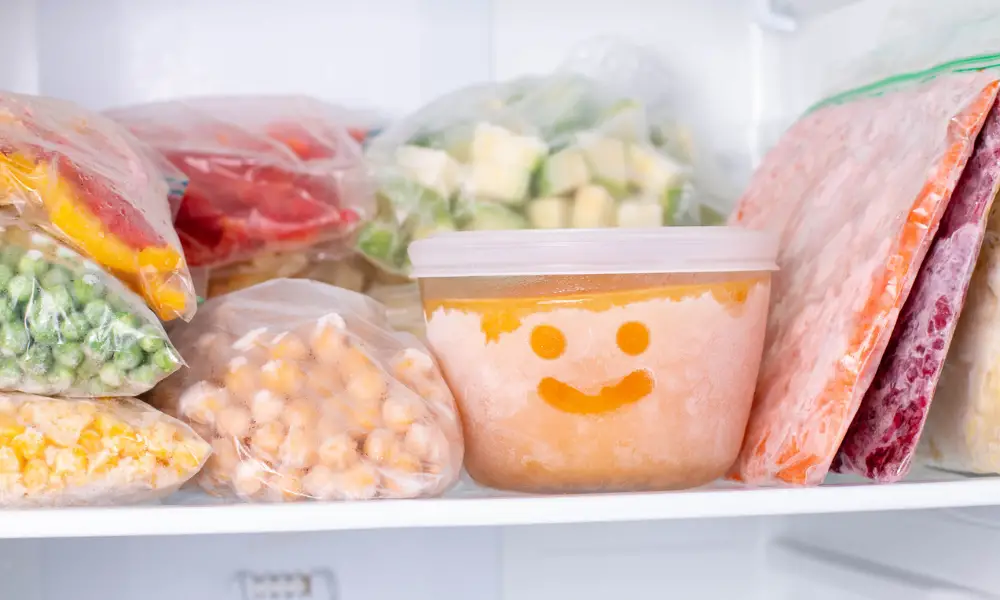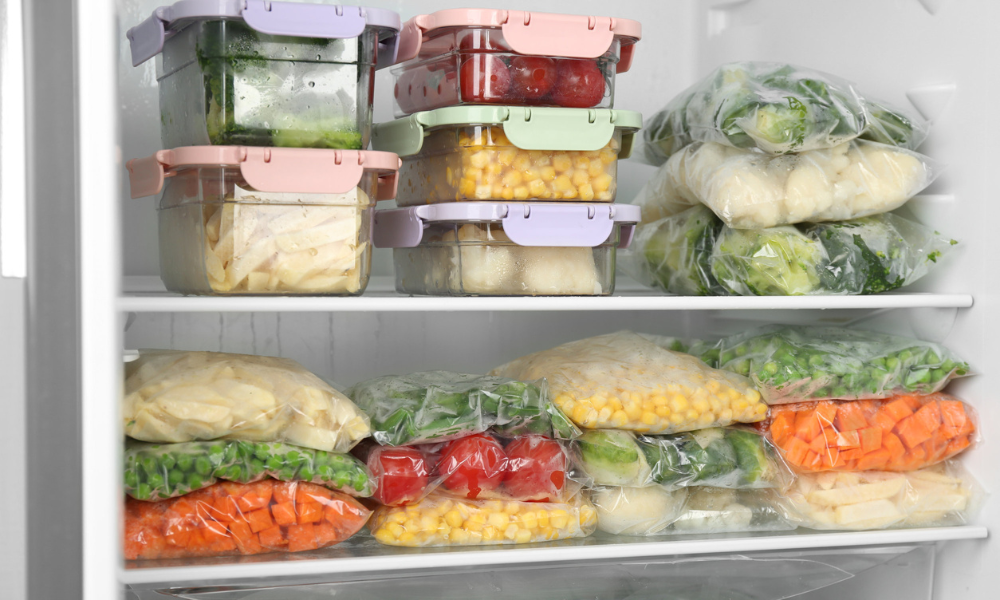The best freezer temperature is generally not the temperature inside your fridge. For one thing, the colder, the better. A cooler environment can hold less water, meaning food freezes more quickly and lasts longer. Also, colder air has been known to hold more energy. If you plan to move from place to place, you may want to keep a few of your favorite frozen treats on hand for the long haul.
Aside from keeping your food fresher for longer, you can save on electricity costs. A home refrigerator can consume as much power as an air conditioner. Similarly, a freezer outside your home will require a lot of electricity. This is where a good quality fridge or freezer will come in handy. As a result, your energy bills will thank you in the long run. This is not to mention that a well-maintained freezer can help prolong the life of your food and cut down on freezer burn.

What is the Best Freezer Temperature?
The ideal freezer temperature to keep your food safe is at or below 0°F (-18°C). However, depending on its environment and other circumstances, your freezer may need to be higher or lower. The typical 0°F (-18°C) freezer factory setting on refrigerators is a wonderful place to start.
A freezer should generally be kept as close to 0°F as possible, except when adding a lot of fresh, warmer food. A flash freeze feature is available on some freezers, which lowers the freezer’s temperatures for 24 hours to prevent freezer burn from temperature changes.
YA freezer with a lot of ice buildup is a solid sign that the temperature is too low. You can manually lower the freezer’s temperature for a few hours, but don’t forget to adjust it. Maintaining your freezer at a too-low temperature may increase your energy costs and result in food losing moisture and flavor.
Why is -18 °C the Ideal Freezer Temperature?
-18 °C was the minimum temperature that the International Institute of Refrigeration advised for frozen food in 1964. Both national and international committees firmly adopted this as a figure in standards, norms, and legislation. The EC Commission then issued its Directive for quick-frozen foodstuff based on the 1967 “Code of practise for frozen foods,” and in 1989, it set a minimum temperature of -18 °C for frozen food storage.
Reactions and microbial growth are slowed down at lower temperatures. Although there is some adherence to Van’t-rule Hoff’s (the velocity of chemical reactions), there is not a consistent decrease in the speed of chemical reactions as the temperature is reduced.
How to Measure the Accurate Temperature?
Regrettably, not all refrigerator temperature gauges are precise. Although you may have set your refrigerator to 37°F, it maintains temperatures closer to 33°F or even 41°F. Refrigerators frequently deviate slightly from the temperature you select.
Additionally, some refrigerators don’t even show the temperature. You can change the refrigerator’s temperature on a scale of 1 to 5, with 5 being the warmest setting. Without a thermometer, you cannot determine what those milestones correspond to in actual degrees.
You may buy a cheap freestanding appliance thermometer online or at any home improvement retailer. Put the thermometer in the freezer or refrigerator and leave it there for 20 minutes. Check the reading after that. Are you at or even near the optimal temperature?
If not, use the refrigerator’s temperature control panel to adjust the temperature as necessary to maintain the temperatures between 0°F and 32°F.
How to Maintain the Coolness of a Freezer?
You can take a few actions to help maintain an ideal temperature if you notice that your freezer is too warm or that your refrigerator temperature is hovering around the 40°F level despite your modified temperature settings.
Before Storing Food, Allow it to Cool
Hot leftover soup bowls or roast chicken can quickly heat the limited space in your refrigerator or freezer, placing the food at risk of bacterial growth. Before covering and storing meals, allow them to cool for a little while (but not until room temperature—that will take too long).
Examine the Door Seals
A refrigerator door’s edge gaskets keep warm air outside and cold air inside. Your chilly air can escape if one of the gaskets leaks. That can make it more challenging to effectively cool the device (and use up more electricity, boosting your monthly electric bill).
Don’t Keep Opening the Door
The warm air enters, and the cold air exits the refrigerator every time the door is opened. When you’re hungry, resist the urge to paw through your refrigerator, looking for something to satisfy your cravings. Instead, immediately close the door after getting what you came for.
The Fridge and Freezer should Always be Full.
A happy fridge is full. Your freezer operates similarly. If the shelves and drawers are mostly full, the refrigerator’s temperature can stay cooler for a longer period and keep food chilled the best. Just watch out for crowding the area and reducing airflow. This may make it challenging to move cooled air and raise the possibility of warm air pockets. Ideally, leave around 20% of the area unoccupied. (A little organizing in the refrigerator can also help with that.)
How to Organize a Freezer?
Post a list of the contents of a deep freezer outside. Note the day you put each item away. Use a magnetic notepad or a board that can be erased.
Wherever feasible, use square Tupperware. Square containers take up less room than round containers and can be stacked and placed in corners.
Comparable foods are stacked together. Designate one shelf for meat, one for baked products, and one for vegetables in a side-by-side refrigerator and freezer.
Edit the items in your freezer from time to time. Rearrange the items, so the oldest ones are always in the front and used first.
What are the Things that can be Kept in the Freezer?
Spinach
Because frozen spinach is packaged when the leafy greens are at their ripest, it is possible to have access to it year-round. (I frequently add tonnes of chopped kale to my freezer for variety’s sake.) Although thawed spinach doesn’t work as a salad foundation, it does great when cooked. Use it to quickly prepare turkey meatballs or a large quantity of spinach and chickpea dish reminiscent of Indian chana saag and packed with flavorful cumin, curry, and turmeric. Tuesday’s 9 o’clock arrival home never seemed so simple.
Bananas
A smoothie’s best buddy is frozen fruit, and freezing bananas is where the magic happens. Bananas can be mixed to create a temporary ice cream replacement when frozen since they acquire a creamier texture. They could also serve as the rich base for your morning smoothie. A few chocolate chips and an almond butter dip on frozen bananas never underestimate their power.
Nuts and Seeds
We know how frustrating it may be to purchase a big bag of wheat germ, flaxseed, sesame seeds, pistachios, or pecans, only to use a cup of them in a dish before they start to go bad by the time you need them again. Instead, try freezing them in Ziploc bags so you can measure how much you need as you go.
Reference: Quality evaluation of foodstuffs frozen in a micromechanical freezer
Different types of foods were chosen and analyzed before and after freezing in both ways to evaluate whether the combined freezer’s usage improves the quality of the finished product. Chicken escallops, hamburgers, strawberries, asparagus, and mushrooms were the products chosen.
The quality factors examined for this project were the texture, color, and drip loss while thawing. To ascertain the degree of hardness of the protective crust created by the liquid N2 pretreatment, the variation in mechanical resistance as a function of immersion time was also assessed.
What is Freezer Burn?
Freezer burn occurs when air gets to frozen food, causing oxidation and dehydration that damages the food. Typically, it results from food not being properly packaged in airtight containers.
When the air gets to the surface of frozen food and dries it out, it develops grayish-brown leathery blotches known as freezer burn. Chemical changes in the food’s pigment cause color variations. Freezer burn only results in dried areas on food; it does not render it dangerous. The flavor will be improved by removing the freezer burns, but the dish is still useful and edible. Additionally, through sublimation, water from the meal is lost in the sky, causing the food to become overly dry. The food and other places where the water sublimates and packaging as snow-like crystals.
How to Identify the Freezer Burn?
Freezer burn can happen to any food that is kept in a freezer. However, foods with greater water content, such as produce, meats, poultry, fish, or ice cream, tend to be more affected than foods with lower water content, such as nuts, seeds, or flour, because it is a result of dehydration.
Fish, poultry, and meat may form leathery regions that are dark brown or grayish-white in color. The texture after cooking could be harsh and dry.
Fruits and vegetables with freezer burn seem dry and shriveled, making it easy to identify them. Due to their high water content, they may also be encrusted with ice crystals, and cooking them will probably give them a woody texture.
A coarser texture will form in baked items like bread or cake and starchy foods like cooked grains, rice, or pasta. Meanwhile, baked dishes will be dry and less voluminous, and grains could be covered with ice crystals.
Ice cream that has been freezer burned loses its smoothness and instead develops ice crystals.
Conclusion
The best freezer temperature for your needs should be between -18 to -20 degrees Celsius, depending on your preferences. In addition, you should always consider the ambient air temperature in your room and ensure that your door is tightly sealed against the heat.
You can use a thermometer to determine whether your freezer is cold enough. Most thermometers will measure the temperature of the air in your freezer. If the reading is above 100 deg C, then you must subtract the reading from the measured temperature in your fridge.
